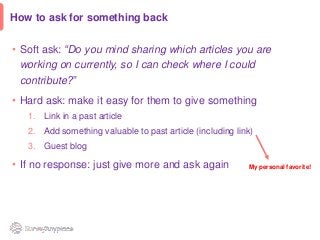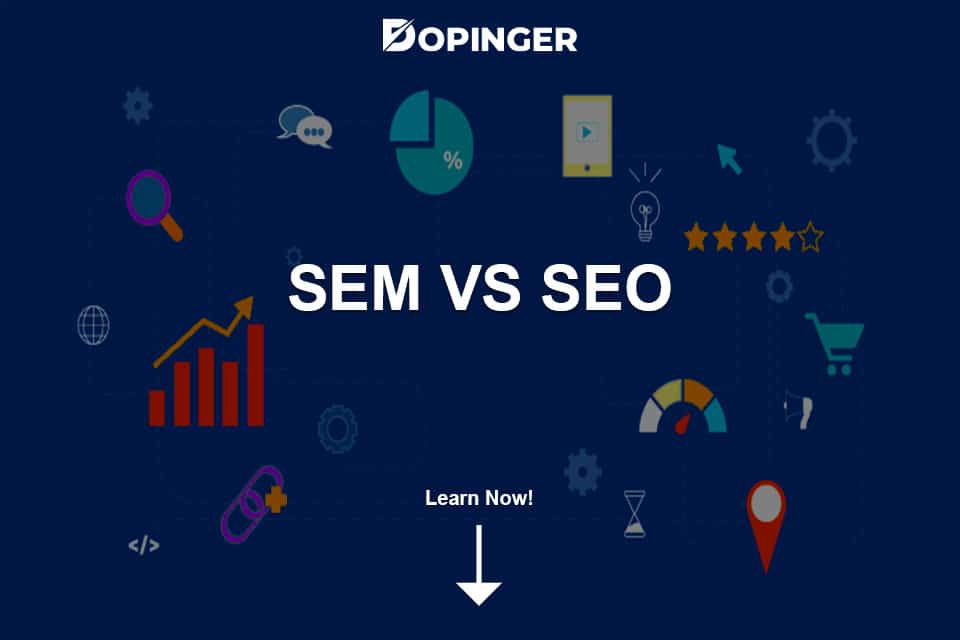
Google will not rank your blog if you only optimize its title. Google will crawl your site to search for keywords. A basic SEO strategy is essential to make your content easier to index and show. Headings should also be considered when optimizing blogs for SEO. They allow readers to flow through the content, and search engines to understand the hierarchy of your reading. Be sure to use keywords and phrases when creating headings.
Meta description
Use an organic tone when writing your meta description for SEO blogs. You can answer users' queries with your meta description, and show off your high-quality material. Websites that look like spam are a negative impression on users. Remember the golden rule of writing for people, not robots, and you'll receive more clicks as a result. Here are a few tips to help you write a compelling meta description:
Make it exciting: Include your main keyword within your meta description. Google does NOT count your meta-description when indexing your webpage, but it does help to grab a user's interest. It is important to keep your meta description between 140-161 characters. Make sure you bold the most important words. A call to action should be included in the description, such as a link that takes you to your website. A well-written meta description should include an attractive call to act.
Your meta description can be used to promote your company. It is a great way to catch a user's attention and persuade them to click on the link. A well-written meta description can help increase site traffic and sales. To encourage users, a call for action should be placed at the end. Your meta description may not be useful if you have too much or outdated information.
A meta description, in addition to making your site more readable and easier to read, can help increase click-through rates. The meta description, when used correctly can improve your organic traffic as well as your rankings. Google's search engine result pages play a minimal role in your meta description. Your page may be ranked on page four if your meta description isn't optimized. It is worth adding a meta description to your blog even if it has a low click through rate.
Keywords in the title
You can get the most from your SEO blog posts if you use targeted keywords in your title. Keywords in the title help you establish the direction of your content and how likely it is to reach your target audience. Search engines rank web pages according the keywords that are used within them. These crawlers are able to use their advanced technology to evaluate the quality and relevance of the material. To improve your article's search ranking, it is important to include relevant keywords in the title.
If you own a gym, use phrases related to crossfit training or crossfit gyms. One keyword should be used per article. Too many keywords in a single article can appear spammy to search engines. This makes your content less useful to your readers. Articles that use long-tail keywords will rank better than those with shorter-tail keywords. These phrases can help you rank higher for a keyword in Google.
The title of your SEO blog should be between 60-70 characters. Title tags should contain the keyword focus as close as possible to the beginning. In addition, your chosen keyword should convey the benefit your post provides. Keyword stuffing is a bad practice. Google warns against keyword-stuffed titles. It is important to include a strong focus keyword in the title. Your audience should also be able to understand your content.
Just putting your keywords in the title is half the battle. Your title for your article should not exceed 60 characters (or 575 pixels). You should make sure that your title fulfills the promise made in the title. It should also be easy for people to scan and read. SEO is all about planning. Your title should be as effective and informative as possible.
Internal links

You can increase the search engine optimization of your website or blog in many ways. To direct users to different pages within your website, one option is to use internal linking. These links can lead to different product pages or content. This not only enhances the user experience, but also increases the search performance. Remember that internal links do not work the same as backlinks and readers will be unable to find them by themselves. This can be achieved by using internal links at the right places.
Adding relevant internal links in your blog is an SEO-friendly way to attract and retain readers. Most sites add different styles to their links, so it is important to choose the right words and anchor text when implementing a link strategy. Internal links are a great way to grab your readers' attention and keep them on your website longer. For best results, make sure to use internal links that point back to relevant content and offer a useful solution for a user.
If possible, internal links should point to the main target keyword. Although it is unlikely that Google will penalize you for using exact-match anchor text, you must make sure the anchor text matches the content of the linked page. However, it should not be keyword-stuffed. Do not manipulate your anchor text to boost your rankings. This tactic is not allowed by Google's webmaster policies. This is a more efficient method than you might realize.
The creation of content on topics relevant to your core service is another way to optimize internal linking. A Columbus landscaping company generates more searches than the "best smartphone" phrase, with 390 searches per month. SEO can be enhanced by strategically including internal hyperlinks in blog posts. It is a good idea to anticipate what users will be asking when they browse your website.
Schema markup
Schema markup can be included in your blog posts to increase your search engine ranking. To create schema markup, visit Google Structured Data Markup Helper. You simply need to enter the URL for your website, select a category, then copy and paste the HTML code. This tool will open a new window and generate a tag manipulator. From there, you can click individual elements to tag them.
There are three types in schema markup: NewsArticle TechArticle & Microdata. Depending upon the content of the post each type can have a different set or flags. NewsArticle, on the other hand, is for articles that cover current events. TechArticle can have flags indicating the technical content in the article. An example is a HowTo article. These flags could indicate the technical level of its author, the software used and any dependencies.
Google has made it simpler to create schema. You can tag data to see similar content in search results. It is recommended that you use schema markup in your blog posts to build brand awareness. However, schema is best for small businesses with a local presence. Schema can be used to promote events and your business. Schema markup is a great way to improve your SEO blog posts. If you're unsure about what to use, check out the links below.
You can also use schema to optimize content. Search engines can understand different elements on a website's markup. If you're writing about food, schema markup can help identify ingredients and instructions. Schema markup can also be used to build a review blog. In general, the more relevant content you have to a user’s query, the higher your search engine rankings.
Copyrights for images

It is important to get permission from the owner before you use an image in your SEO blog. Many PR agencies don't allow images to be shared from their websites. You may not have the right to use these images. Contact the owner directly to find out. Many times, the owner will grant permission to you to use the image. Here are some tips for complying with the law
Google images should not ever be used. Before you use an image on your blog, contact the original owner. Google allows for image searches, but you must obtain permission to use them. If you have trouble finding the image you need, you can visit the page it is hosted on and ask for permission. This will ensure that you're not violating any copyrights. The difference between a successful SEO website and one that is blocked by search engines can be made with image copyrights.
You should ensure that you check the copyrights for any image that you plan to use on your blog. While it might be tempting to use images found on Google Images, it's illegal. You can't steal images from Google Images without permission. This will discredit the original image creator and put you at risk of legal repercussions. If permission is granted by the owner, public domain and fair-use photos can be used. If you still have any doubts, consult an intellectual property attorney.
Images that are used in SEO blogs must have the same author as the attribution. Photos that are funny or creative will be more likely to get used for SEO purposes. However, you should always read the terms of the license. Some images can be freely used, but some restrictions apply. You shouldn't use any images unless you know who the author is. You may be violating copyright if they're not free from royalty. You could also face a lawsuit that could cost you a lot.
FAQ
How do I get more Facebook visitors?
Facebook has many different ways you can increase traffic to your site. Facebook ads are one of the best ways to increase your website traffic. With Facebook ads, you can target specific audiences based on interests, demographics, and location. You can also set a daily budget to see which posts are performing well.
What Are Some Common Mistakes That People Make While Using SEO
The most common mistake people make when using SEO is not taking the time to do it right. SEO is not a quick process. Your website must be optimized correctly to succeed. Search engines are often tricked by black-hat techniques. This is another common error. Black-hat SEO techniques can cause you to fall in search engine rankings rather than improve them.
How Much Does It Cost To Get Rank High in Search Results?
Costs of search engine optimization will vary depending upon the type or project. Some projects only require minor changes to an existing website while others will require a complete redesign. Monthly fees are charged for keyword research as well as maintenance.
How can I create an SEO strategy for my website?
Understanding your goals and how you plan to achieve them is the first step in developing an SEO strategy. This allows you structure your content to meet these goals.
The second step in the process is to work on your keywords. You can gain insight into the keywords people use to search for certain words by doing keyword research. You can then create articles on these topics by using this information.
Your target keywords should be included in your articles once you have finished writing them. Each article should be optimized by adding relevant images and videos. Lastly, link to other related pages wherever possible.
Now it's time for you to optimize the content that you have written.
Do I need a digital marketing agency?
As soon as you realize that your business needs a little bit of extra support, it's probably too late to try and handle everything alone. A digital marketing agency is designed to provide professional services to small businesses like yours. They can help you market your company online, and they are up-to-date on the latest trends.
They can handle everything, including developing and implementing a strategy, managing social media accounts, analytics, and reporting.
Statistics
- Which led to a 70.43% boost in search engine traffic compared to the old version of the post: (backlinko.com)
- Sean isn't alone… Blogger James Pearson recently axed hundreds of blog posts from his site… and his organic traffic increased by 30%: (backlinko.com)
- A 62.60% organic traffic boost to that page: (backlinko.com)
- : You might have read about the time that I used The Content Relaunch to boost my organic traffic by 260.7%: (backlinko.com)
- 64% of marketers actively create SEO campaigns because they help hit multiple key performance indicators (KPIs), including increasing traffic, helping your site rank for relevant keywords, improving your conversion rate, and much more. (semrush.com)
External Links
How To
How to create a keyword strategic plan
Keyword research is an important part of any SEO campaign. It allows you to find out what people are searching through search engines such Google and Bing. You can then create content around those keywords. This information will enable you to concentrate on creating content relevant to certain topics.
Keywords should be included in the text of every page. You don't want to stuff them at the end of pages or into awkward places. Instead, choose words that clearly describe the subject and place them where you think they will make sense. For example, if you're writing about dog grooming, write "dog grooming" instead of "dogs," "groom," or "grooming". This makes the content easier to read and easier for users.
It is best to avoid using too many keywords. You should not overuse keywords. Instead, spend your time creating quality content that is related to them. If you spend too much time producing low-quality content, it's possible that your visitors won't be interested enough. It's best to limit backlinks. You shouldn't disregard backlinks completely, however. They still have value for websites if used correctly. These links can help you improve rankings and increase the authority of your site.
It is particularly useful to link other websites that deal with similar topics. If you have a product review blog, linking to other product reviews will increase your chances of appearing higher in search results.
This means you'll get more organic traffic from searches relating to your niche. Join forums to maximize your exposure. You will likely be mentioned in return by the members of these forums.